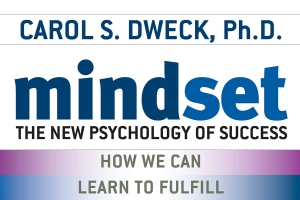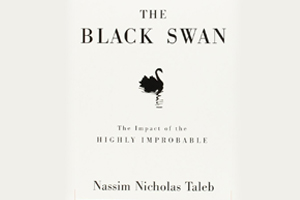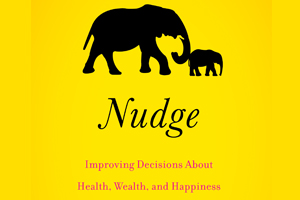The Most Important Thing
Author: Howard Marks
We have often heard people lament that the ground reality is different from what we read. “The Most Important Thing” by Howard Marks is just the opposite. Insights gleaned from decades of memos that billionaire value investor Howard Marks wrote throughout his investment career span the pages of this book, giving people a ground-up perspective on markets and investments. This book consists of opinions and insights from not only Howard, but also from investment educators like Joel Greenblatt, Paul Nicholson, Seth A. Klarman and Christopher Davis. Together, these experts talk about various concepts including defensive investing, opportunities, and second level thinking. Basically, the book outlines the strategies necessary for a successful investor and also defines the dangers associated with it, especially for people who tend to invest blindly. While the book illuminates the many aspects of investing it also succinctly discusses the concept of risk. Novice, as well as seasoned investors, can find value in the book. As the legendary investor Warren Buffet remarked about the book, “It is that rarity, a useful book”.
Key Takeaways
- Successful investors possess a second-level thinking that helps them see things and find value where others cannot
- The Efficient Market Theory does not hold true all the time
- “Buying Low” and “Selling High” is not just about the price but also about the value
- It is important to determine the intrinsic value of a stock and then assess price relative to the intrinsic value
- Since the future is uncertain, there will always be some amount of risk involved in investing. Successful investors recognise this risk, understand it and then take steps to mitigate it
- Stock markets move in cycles. Identifying these cycles can be helpful in making good investment decisions
- Do not fall prey to your lack of knowledge. Learning is essential to becoming a successful investor
- Patience is a virtue and a great asset for the successful investor
- Investing has a dual goal – maximise returns while minimising losses
Second - Level Thinking
Earning average returns is not the most difficult task in the world. However, consistently earning above-average returns requires a special something that not all investors possess. While there are many people who are content with investing in anything that offers average returns, others want to stay a step ahead and beat the market. In order to accomplish this, it's necessary to be adaptive and intuitive instead of making investing a mundane and mechanised process. Although an investor can follow his role model and mimic his rules, he cannot actually perfectly mimic his role model to replicate the gains. What works for one investor might be disastrous for another. Therefore, in order to generate better than average returns, the most important thing an investor should possess is perceptive or second-level thinking. Second-level thinking is a thought process that will enable him to see beyond the obvious. This will help the investor find value and exploit opportunities that others might not see.
Understanding Market Efficiency (and Its Limitations)
A lot of financial literature waxes eloquent about the “Efficient Market Hypothesis”. Basically, the EMH states that all information relevant to a stock is publicly available and is immediately reflected in the price of the stock. While this concept does hold true most of the time, it is in no way sacrosanct. For instance, in January 2000, Yahoo was selling at $237, but in 2001, it had plummeted to just $11. Therefore, the market was wrong in at least one of these instances. When prices reflect the consensus, sharing the same view might only deliver average results. In order to beat the market, it's very important to have a unique and different view.
Value and the Relationship between Price and Value
“Buy Low and Sell High” is something that all investors attempt to do. However, in order to determine the “low” and the “high”, it's important to determine the accurate intrinsic value. Therefore, it's obvious that an investor needs to purchase stocks well below its intrinsic value and then sell it at a much higher price. The only way one can arrive at an accurate intrinsic value is through fundamental analysis. It is only after carefully evaluating a company, its current performance and its future growth potential can one arrive at an intrinsic value for the stock. Once an investor estimates the intrinsic value of an asset or stock, he/she can go ahead; however, even if the estimated intrinsic value is correct, it's equally important to figure out the asset/stock's price that is relative to the value. Therefore, it is very important to establish a good relationship between the fundamentals, value and the price. As a value investor, one must also be cognisant of the fact that price is merely the starting point and that no asset is too good to be true. Any asset that seems attractive at a low price should also seem like a bad deal when the price is way too high.
Recognising, understanding and handling risk is essential
It's not really impossible to find investments that could deliver outstanding returns in the future; however, an investor is probably not going to be successful if he/she shies away from dealing with risks. Investment performance is something that is going to happen in the future. So, risk is something that will have to be experienced either now or later. Risk simply means that you're uncertain about the future and also about the loss that you might incur. When prices are high, participating in the market along with the rest of the crowd rather than avoiding it could be a major risk. Similarly, there's no such thing as “low prices = low risk”. No matter what the value is, there is a certain amount of risk involved because it is not possible to predict the future. Risk assessment is essential due to three reasons. Firstly, since there are too many theories about risk, the investor has to first understand whether he can take it and live with it later. Secondly, the investor also has to think about the potential return. Thirdly, the investor will also have to assess the risk itself and evaluate whether it's worth it. Once you have assessed the risk, the next step is to mitigate or control it. While all investors face risk at one point of time or the other, bearing risk intelligently for profit is what makes an investor stand out from the rest. Great investors are judged for their capability to manage and control risk and also generate returns.
Cycles – The Ups & Downs
What goes up must come down and then go up again. Eventually, everything is cyclical and nothing moves in one direction for a long time. The mood swings of the market are similar to the swings of the pendulum. While it may swing from one extreme to another, it also swings from risk aversion to risk tolerance, from greed to fear, from optimism to pessimism and from low prices to high prices. In reality, we aren't capable of predicting which way the pendulum may swing. Even though it is next to impossible to predict things, it's definitely possible to prepare so that the loss or damage is controlled. When it comes to investing, there are many unknown factors. However, what is known is that stock markets move in cycles. Understanding and paying heed to cycles can be very instructive when it comes to investment decision making. There are only a few things that are sure. However, you can be absolutely sure that just about everything is cyclical. If you are attentive to cycles even when others stop paying heed to it, you are more likely to become a successful investor.
Learn, Be Aware and Combat Negative Influences
While there are many investors who suffer from inefficiencies such as mispricing, miscalculations and other mistakes, the ones who are cognisant of these mistakes and are able to address them will eventually be successful. Since it is not possible to identify what might occur in the future and since very few people have the wisdom of using their knowledge to their advantage, knowledge plays a major role in making the right investments. Therefore, an investor who is aware of his limited knowledge, no matter how knowledgeable he is, will definitely have an advantage over others. Market cycles have ensured that investors continue to face daunting challenges. Firstly, the highs and lows are inevitable. Secondly, the cycles will also influence the investor's performance and thirdly, unpredictability is not the only issue but the timing as to when it occurs can also make an investor lose sleep. Therefore, it is essential for an investor to understand where he/she stands. Of course, the cycles can help to estimate things to a certain extent, but cannot predict the future with certainty. However, it is most probably the best estimate. At the end of the day, investors should have realistic expectations. Often, people expect high returns with no or little risk. Here, greed and fear also make them forget the golden rules of investing. It's certainly tough to combat these negative influences, but the ones who refuse to join the crowd even when it is very tempting are the ones who will be successful.
Successful Investing
It is not always possible to find the best deals. Sometimes we hit and miss. The most important thing for an investor is to learn patience. Therefore, instead of chasing deals, it's a good strategy to wait for things to come your way. In addition, you should purchase something that the seller wants to sell rather than buy something only because you need or want it. Do not expect cycles to occur all the time and don't think that the market is under/overpriced all the time, because, everything can be balanced and there may be no mistakes. While most investors tend to follow the trend, superior investors go the opposite way. As stated by Sir John Templeton, “It takes a great amount of courage to sell when others are buying and buy when others are desperately selling”. However, this strategy offers the greatest profit. One can't be successful by simply following the trend because if that was the case, just about everybody would have made money as an investor.
Therefore, in Howard's words, “the key to success lies in the fact that you sometimes do the opposite, even if the trend dictates that you become a part of the herd.” Another important thing to remember is that it is not necessary for a cheap stock to provide the best returns. Sophisticated investors do not simply buy the cheapest stock, but instead, they make a list of investment options that meet their own criteria. While these criteria may differ from one investor to another, they usually evaluate the risk involved. In addition, an intelligent investor should not always invest in a cheap stock because there could be a very good reason for it to be available at cheap valuations. For example, a product that might not be hot now could vanish into thin air years later and this could make an investor hesitant. The point here is that in order to become a successful and profitable investor, it is best to choose the best bargains after making a list of what you're comfortable with. Over and above skills, one must also accept that often there is luck at play. Markets can oft times behave in a random fashion in which luck and not skills might generate spectacular returns.
Investing Defensively and Avoiding the Pitfalls
An investor should strike a good balance between making money and avoiding losses. One can't make a great profit and avoid loss simultaneously. Basically, it's like choosing between offence and defence. The position an investor chooses will be critical for his decisions in investing. It is alright to invest defensively and avoid losses, rather than trying to hit winners and make money all the time. It is possible to avoid loss by recognizing the pitfalls one might face as an investor. Greed & Fear is often the main source of all mistakes and pitfalls. Investors should actively try to avoid these at all cost.
Adding Value
It's not very tough for an investor to gain some knowledge and perform according to the market's demands. However, investors who take it a step further and outperform the market are the ones who add real value to it. This takes skill and requires the investors to become second-level thinkers. Value is the very foundation for a good investment career. When an investor learns something others don't, perceives things differently, and possesses the ability to analyse the value, he/she stands a better chance of investing profitably. Value is best when it's analytical and based on solid facts. This will help an investor recognize when he can sell or buy stocks.
It is well-known that stock markets move in cycles and the successful investors are those who can accurately time these cycles and follow the buy low and sell high principle. Or, you can identify the market trend and then invest in the direction of that trend. We also know that in reality, following either of these approaches is almost next to impossible for an average investor who is not constantly following the markets or who does not have the time to conduct regular research and analysis. If you are one of those investors, then you can certainly consider investing in a Balanced Advantage mutual fund. A Balanced Advantage Fund is basically a hybrid mutual fund, i.e., it invests in a mix of both equity and debt instruments. What makes it unique is that it dynamically manages exposure to both in an attempt to take advantage of market up moves and protect the portfolio during market down moves. The exposure to equities can range between 30% to 80% - this gives them flexibility to switch between the two asset classes based on predetermined investment criteria that are designed to capture market opportunities and limit portfolio downside. When the equity market starts going up, these funds increase their equity exposure by purchasing more equity investments. This way, they are able to benefit from the long-term growth potential of equities. On the other hand, when equity markets become excessively volatile or start going down, they reduce their equity exposure and start increasing their exposure to debt investments. This way, they are able to protect the portfolio from equity market volatility and limit portfolio downside. Additionally, by switching from equity to debt in a timely manner, they are also able to protect the gains made from the equity investments. So, at an individual level, you don't need to worry about market cycles. BAF takes care of that for you.
An investor education initiative
All Mutual Fund Investors have to go through a onetime KYC process. Investor should deal only with Registered Mutual Fund (RMF). For more info on KYC, RMF and procedure to lodge/redress any complaints – please visit onhttps://www.edelweissmf.com/kyc-norms
MUTUAL FUND INVESTMENTS ARE SUBJECT TO MARKET RISKS, READ ALL SCHEME RELATED DOCUMENTS CAREFULLY.
Trending Books
MUTUAL FUND INVESTMENTS ARE SUBJECT TO MARKET RISKS, READ ALL SCHEME RELATED DOCUMENTS CAREFULLY.













